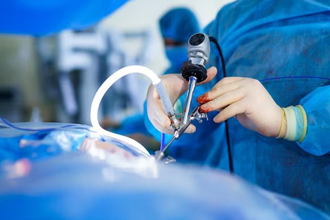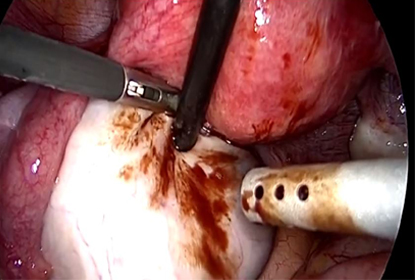At Indian Endometriosis Foundation , we are dedicated to providing the highest level of care to our patients with endometriosis. We understand that seeking treatment for this condition can be overwhelming, and we are here to support you every step of the way.
SURGICAL TECHNIQUE
SURGICAL TECHNIQUE

NOSE technique for endometriosis
The NOSE technique is a surgical approach used to treat endometriosis. NOSE stands for “natural orifice specimen extraction,” which refers to the removal of the excised tissue through natural orifices such as the vagina, rather than through a larger incision in the abdomen. This technique has become increasingly popular in recent years as a way to minimize scarring and reduce recovery time.
The NOSE technique is performed laparoscopically, using small incisions and a camera to view the pelvic area. The surgeon will use a variety of tools to remove endometrial tissue and other abnormal growths from the affected areas. Once the tissue has been removed, it is extracted through the vagina or other natural orifice, rather than through a larger incision in the abdomen.
There are several potential benefits to using the NOSE technique for endometriosis surgery. One of the most significant benefits is that it can reduce scarring and improve cosmetic outcomes, since there are no large incisions in the abdomen. Additionally, because the procedure is less invasive, recovery time may be shorter, and patients may experience less pain and discomfort following surgery.
However, the NOSE technique may not be appropriate for all patients or all types of endometriosis. Dr. Surakshith Battina M.D. will be able to determine whether this approach is right for your individual case, based on factors such as the extent of the disease and your overall health.
In summary, the NOSE technique is a surgical approach used to treat endometriosis that involves removing excised tissue through natural orifices such as the vagina. While this technique may offer some potential benefits over other surgical approaches, it is important to work closely with us to determine the best treatment plan for your individual needs and circumstances.
Endometrioma Sclerotherapy
Ovarian sclerotherapy is a minimally invasive procedure that is performed to treat endometriomas, which are cysts that form on the ovaries due to the presence of endometrial tissue. These cysts can cause pain, discomfort, and infertility, and are often treated with surgery. Ovarian sclerotherapy involves injecting a solution into the cyst to shrink , clear and prevent it from recurring.
During the procedure, the patient is placed under anesthesia, and a needle is inserted into the cyst using ultrasound or laparoscopic guidance. A solution containing a sclerosing agent is then injected into the cyst. The solution causes the lining of the cyst to become inflamed and eventually scar over, which shrinks the cyst and prevents it from filling with fluid and destroy the cyst wall of the endometrioma.
Ovarian sclerotherapy has been shown to be effective in treating endometriomas and can reduce the risk of recurrence compared to other treatments such as cauterization of the cyst wall. An ovarian cystectomy or excision may lead to damage to ovarian tissue and reduced ovarian reserve, which can affect fertility. On the other hand, sclerotherapy can help preserve ovarian function by minimizing tissue damage.

Additionally, ovarian sclerotherapy may be particularly beneficial for women who are looking to conceive, as it does not involve the removal of ovarian tissue. Removal of ovarian tissue can impact ovarian function and reduce the chances of successful pregnancy.
GET IN TOUCH
If you have any questions or concerns about endometriosis or our services, please do not hesitate to contact us. Our compassionate team of healthcare professionals is here to help you navigate your diagnosis, treatment options, and ongoing care.
